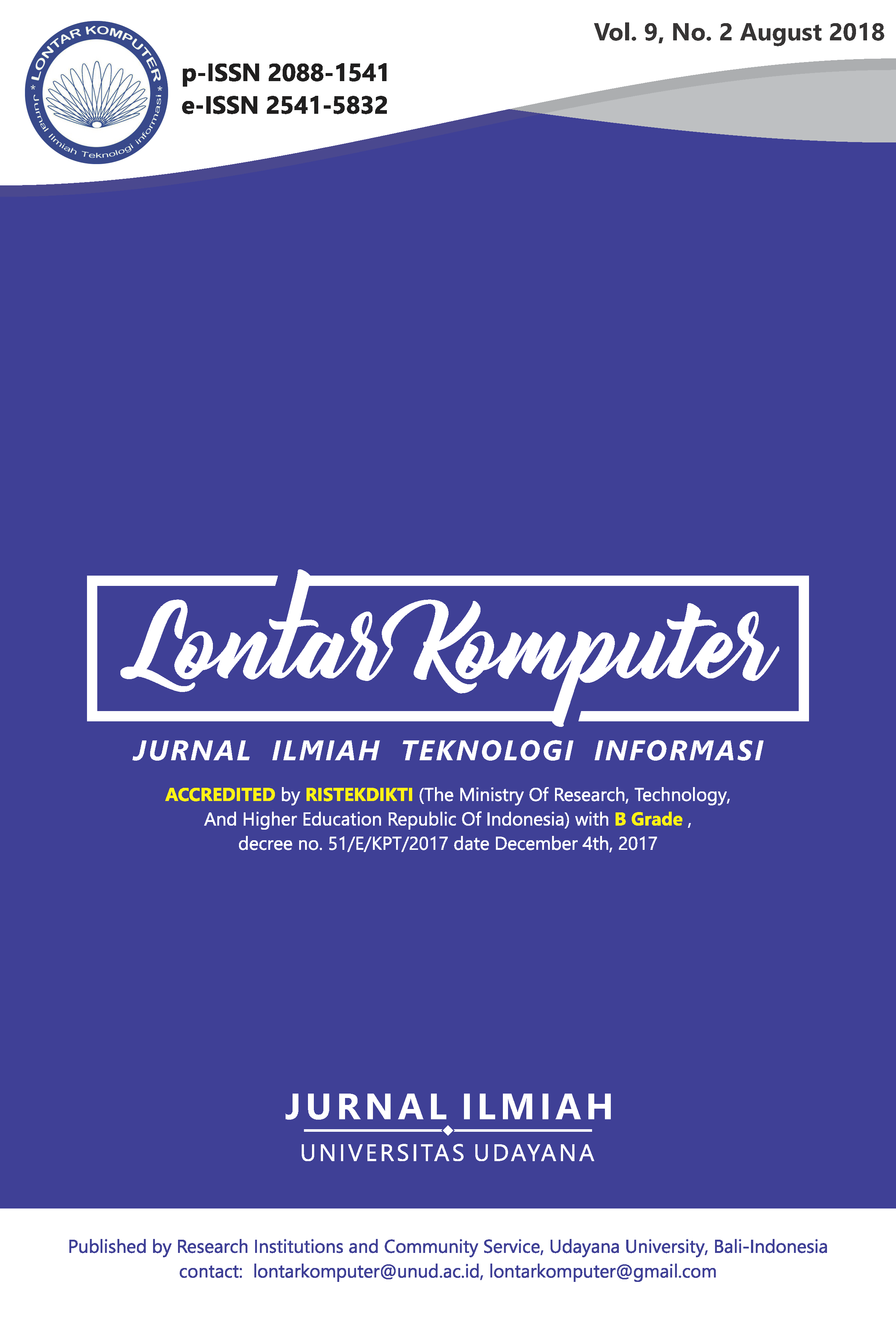Implementation Equal-Width Interval Discretization in Naive Bayes Method for Increasing Accuracy of Students' Majors Prediction
Abstract
The Selection of majors for students is a positive step that is done to focus students in accordance with their potential, it is considered important because with the majors, students are expected to develop academic ability according to the field of interest. In previous research, Naive Bayes method has been tested to classify the student’s department based on the criteria that support the case study on Private Madrasah Aliyah PAB 6 Helvetia students and the accuracy of the test from 100 student data is 90%. in this study, the researcher developed a previously used method by applying an equal-width interval discretization that would transform numerical or continuous criteria into a categorical criteria with a predetermined k value, different k values ??would be tested to find the best accuracy value. from the 120-student data that have been tested, it is proved that the result of the classification of the application of equal-width interval discretization on the Naive Bayes method with the value of k = 8 is better and increased the accuracy value 91.7% to 93.3%.
Downloads
References
[2] X. Zhou, S. Wang, W. Xu, G. Ji, P. Phillips, P. Sun, and Y. Zhang, “Detection of Pathological Brain in MRI Scanning Based on Wavelet-Entropy and Naive Bayes Classifier,” Springer, Cham, 2015, pp. 201–209.
[3] L. Jiang, C. Li, S. Wang, and L. Zhang, “Deep feature weighting for naive Bayes and its application to text classification,” Engineering Application of Artificial Inteligence, vol. 52, pp. 26–39, Jun. 2016.
[4] B. Tang, S. Kay, and H. He, “Toward Optimal Feature Selection in Naive Bayes for Text Categorization,” Feb. 2016.
[5] A. M. P. and D. S. R., “A sequential naïve Bayes classifier for DNA barcodes,” Stat. Appl. Genet. Mol. Biol., vol. 13, no. 4, pp. 1–12, 2014.
[6] J. Wu, S. Pan, X. Zhu, Z. Cai, P. Zhang, and C. Zhang, “Self-adaptive attribute weighting for Naive Bayes classification,” Expert Systems With Application, vol. 42, no. 3, pp. 1487–1502, Feb. 2015.
[7] N. Mohamad, N. Jusoh, Z. Htike, and S. Win, “Bacteria identification from microscopic morphology using naive bayes,” International Journal of Computer Science, Engineering and Information Technology (IJCSEIT ), vol. 4, no. 2, pp. 1–9, 2014.
[8] Y. Zhang, S. Wang, P. Phillips, and G. Ji, “Binary PSO with mutation operator for feature selection using decision tree applied to spam detection,” Knowledge-Based Systems, vol. 64, pp. 22–31, Jul. 2014.
[9] S. Kotsiantis, “Integrating Global and Local Application of Naive Bayes Classifier.,” Inter-national Arab Journal of Information Technology, vol. 11, no. 3, pp. 300–307, 2014.
[10] S. Palaniappan and T. Kim Hong, “Discretization of continuous valued dimensions in OLAP data cubes,” International Journal of Computer Science and Network Security, vol. 8, no. 11, pp. 116–126, 2008.
[11] I. Kareem and M. Duaimi, “Improved accuracy for decision tree algorithm based on unsupervised discretization,” International Journal of Computer Science and Mobile Computing, vol. 3, no. 6, pp. 176–183, 2014.
[12] G. Forman, “An Extensive Empirical Study of Feature Selection Metrics for Text Classification,” The Journal of Machine Learning Research, vol. 3, no. Mar, pp. 1289–1305, 2003.
[13] Y. Yang and J. Pedersen, “A comparative study on feature selection in text categorization,” in 14th International Conference on Machine Learning, 1997, pp. 412–420.
[14] A. Genkin, D. D. Lewis, and D. Madigan, “Large-Scale Bayesian Logistic Regression for Text Categorization,” Technometrics, vol. 49, no. 3, pp. 291–304, Aug. 2007.
[15] B. Tang and H. He, “ENN: Extended Nearest Neighbor Method for Pattern Recognition [Research Frontier],” IEEE Computational Intelligence Magazine, vol. 10, no. 3, pp. 52–60, Aug. 2015.
[16] A. Saleh, “Implementasi Metode Klasifikasi Naïve Bayes Dalam Memprediksi Besarnya Penggunaan Listrik Rumah Tangga,” Creat. Inf. Technol. J., vol. 2, no. 3, pp. 207–217, 2015.
[17] A. Al-Ibrahim, “Discretization of Continuous Attributes in Supervised Learning algorithms,” Res. Bull. Jordan ACM, vol. 2, no. 4, pp. 158–166, 2011.
[18] D. Joiţa, “Unsupervised static discretization methods in data mining,” Titu Maiorescu University, 2010.
The Authors submitting a manuscript do so on the understanding that if accepted for publication, the copyright of the article shall be assigned to Jurnal Lontar Komputer as the publisher of the journal. Copyright encompasses exclusive rights to reproduce and deliver the article in all forms and media, as well as translations. The reproduction of any part of this journal (printed or online) will be allowed only with written permission from Jurnal Lontar Komputer. The Editorial Board of Jurnal Lontar Komputer makes every effort to ensure that no wrong or misleading data, opinions, or statements be published in the journal.
 This work is licensed under a Creative Commons Attribution 4.0 International License.
This work is licensed under a Creative Commons Attribution 4.0 International License.























